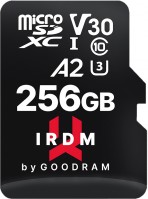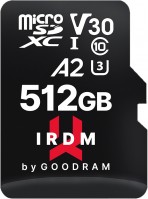SSD GOODRAM series Iridium (top/gaming)
prices on 4 modelsGOODRAM Iridium
Initially, the target audience of the Iridium line was not too wasteful gamers who wanted to upgrade their old hard drive to a more modern SSD drive without any extra expenses. However, thanks to the smart pricing policy of the Polish brand and high quality control, drives with a stylish red Iridium logo have become a popular alternative to “popular” drives from Crucial, Kingston, A-Data and Transcend.
 |
Initially, only classic 2.5 format SSDs were found in the Iridium lineup. A little later, GOODRAM expanded its assortment, diluting the company of old people with smaller and faster M.2 format drives, which were especially useful for laptop owners. Almost all of them are based on 64-layer TLC 3D NAND flash memory controlled by Phison memory controllers. Occasionally, earlier versions are found on the market (note: most often produced in 2017), built on the basis of MLC memory, which most manufacturers have now abandoned.
2020 and earlier drives connect either via SATA 3 or PCI-E 3.0. As a result, it is the interface that determines the speed capabilities of Iridium drives: conventional 2.5 format drives hit the ceiling when they reach 560 Mb / s, while more modern M.2 SSDs tend to rise and easily take the bar of 3000 Mb / s. Considering that we are talking about drives for gamers, in 2021 GOODRAM updated the Iridium series with the release of several compact SSDs with support for the PCI-E 4.0 interface, thanks to which their speed performance almost doubled and reached 5,000 MB/s.























